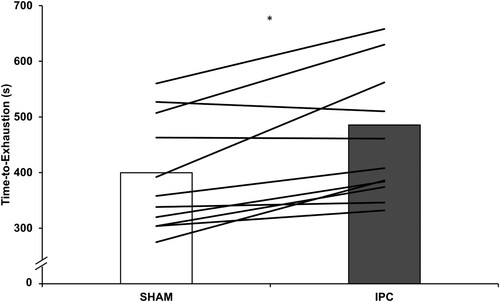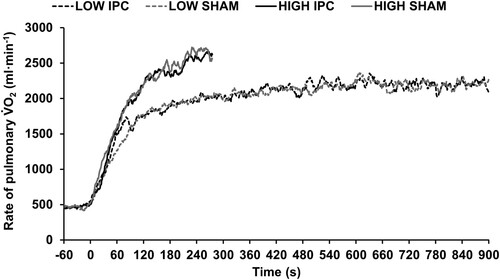Figures & data
Figure 1. Time-to-exhaustion (s) during HIGH following ischaemic preconditioning (IPC) and sham control (SHAM). Columns are group mean; lines are individual participant responses. * indicates difference between IPC and SHAM (p = 0.004).

Figure 2. Rate of pulmonary V̇O2 during the final 60 seconds of baseline and throughout the 15-minute constant work rate trials at LOW and to the minimum completion time (275 seconds) of time-to-exhaustion trials at HIGH following ischaemic preconditioning (IPC) and sham control (SHAM).

Table 1. V̇O2 kinetic parameters during trials at LOW and HIGH following ischaemic preconditioning (IPC) and sham control (SHAM).
Table 2. Physiological and perceptual responses prior to and following trials at LOW and HIGH following ischaemic preconditioning (IPC) and sham control (SHAM).
